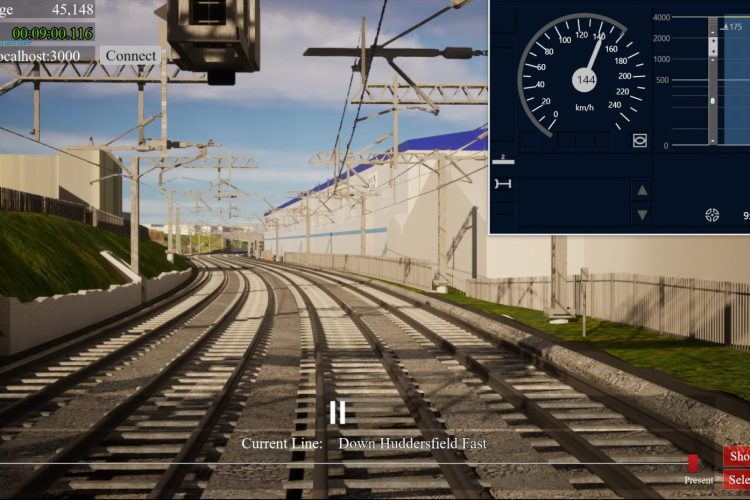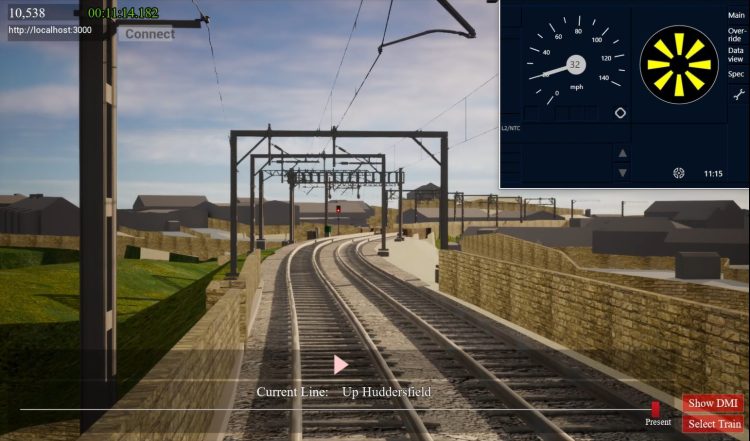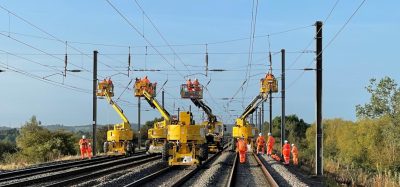New visualisation tool aids signalling design process
Posted: 30 November 2023 | Global Rail Systems Leader, Tom Godfrey | No comments yet
The design of rail signalling systems can be challenging, especially when changes in technology expose inadequacies in the traditional design approach and make it difficult for railway owners and operators to visualise how the signalling system will behave. Arup has developed a digital tool that enables those involved in signalling design to visualise future operation from the driver’s perspective and positively engage with the design at an early stage.


A significant technology shift
Railway owners and operators are critical stakeholders in the signalling design process. Their involvement and feedback is valuable and conducive to the ultimate approval and acceptance of a signalling scheme. Traditionally designers have relied on 2D schematic plans and cab videos of the existing line to solicit feedback from these stakeholders before the signalling scheme is finalised.
With modern digital signalling system such as the European Train Control System (ETCS) and Positive Train Control (PTC), this becomes more difficult. Instead of sending information via the fixed physical signs and signals along the track, these systems provide the driver with signalling information through the dynamic in-cab display, which behaves differently for different types of trains and responds to dynamic elements such as the speed of the train and driver actions.
New design challenges
To ensure operational safety, signalling systems need to be carefully designed with due consideration of human factors.
For modern digital signalling systems an accurate visualisation tool becomes imperative. Without this, stakeholders have great difficulty predicting what the driver in the train cab will see, and when and how he will react. Sometimes they may develop fundamental misconceptions about the behaviour of the signalling scheme and end up making wrong design decisions, or simply prolonging the process resulting in additional cost and delay.
It is therefore vital that the signalling scheme is well understood by all involved.
Enabling constructive feedback
To address this challenge, Arup, together with Graffica, has developed the Rail Signalling Visualisation Tool (RSVT). The RSVT enables railway owners and operators to fully visualise the effects of the signalling information and interact with the signalling system. They can assess human factors, such as how the driver will see and respond to the in-cab signalling information and provide constructive feedback well before a signalling system enters service.
The RSVT helps bring designers and stakeholders to the same level of understanding of the scheme, thus preventing the unnecessary misconceptions that may develop during the design stage. It also gives them the confidence to make sound design decisions that ensure the driver receives the right information, in the right format, at the right time.
The ability of the RSVT to enable stakeholders’ engagement with and feedback on the design at a much earlier stage in the process is crucial because it minimises the risk of substantial objections and late design changes. All this means greater cost and time efficiencies.
High-fidelity visualisation
Arup uses geographical data, design information, and client-specific technical requirements to create a coordinated model that presents a virtual environment that reflects both the system behaviour and the outside world. The virtual environment looks as close to the actual environment as possible. It provides a high-resolution rendering of the real world as well as any new infrastructure that will be erected in the future along the railway route using BIM digital models.
“Once the model is created, the flexibility of the simulator easily allows multiple scenarios of varying infrastructure, signalling, rolling stock and driving modes to be compared,” said Paul Fleming, Operations Director of Graffica.
Interacting with the system
Scenarios are created to allow design engineers, railway owners and operators, and even train drivers to explore and interact with the signalling system. They can “test-drive” the design to assess the signalling system before it is finalised.
The RSVT has been developed as a cloud application so it can be simply configured and accessed remotely through a web browser. Test driving can be carried out much earlier and anywhere without any dedicated simulator rooms or special hardware. Clients’ feedback can therefore be taken on board in a timely manner.
The digital tool can also be used for training purposes. Training materials can be developed to allow drivers to undergo training in different scenarios and to refresh drivers’ familiarity with the railway line once the project is complete.


High adaptability
The RSVT can be deployed in the design process of both modern in-cab signalling systems as well as conventional signalling systems. Design changes and updates can be implemented rapidly as stakeholders’ feedback is gathered and the system design progresses. Arup can adapt the RSVT for a particular railway project in approximately four months and can implement changes, in response to feedback, in a matter of weeks.
Deployment on UK projects
As part of the Transpennine Route Upgrade (TRU) project in the UK, Network Rail is planning to install ETCS signalling on the Transpennine Route.
Arup has deployed the RSVT on the project to help the client validate the ETCS signalling design. It has created an interactive visualisation environment that allows the client as well as passenger and freight operators to assess and test-drive the signalling design so that dynamic behavioural issues can be identified and the necessary adjustments made.
Having experienced the capability of the digital tool on the TRU project, Ron Bailes, Projects Director, Rail Operations (UK) Limited, said, “The RSVT has enabled both train operators and the signal design team to see first-hand what the driver sees on the trackside and within the driving cab. It has also allowed any changes to be viewed and corrected before there is any need to go trackside. The RSVT should be taken forward by ETCS projects as best practice.”
Building on this success, Arup is now deploying the RSVT on another major ETCS project in the UK.
A worthwhile investment
Although we are seeing an unprecedented level of investment in digital signalling, projects are often running late and experiencing cost overruns. Quite rightly this is a major concern for the industry.
Arup’s RSVT helps to address these problems by engaging key stakeholders early in the design process using accurate visualisations that can be updated quickly and efficiently based on their feedback. This leads to greater confidence in the design, less time-consuming and costly changes, and better understanding of how the final scheme will “look and feel” for the operator.








